OpenAI intelligent body system: the future of human and ai collaboration has come
Early morning in the cafe, the programmer holding a coffee cup in front of the computer screen suddenly smiled at the screen. Three hours ago knocked down the code instructions, has now evolved into a set of intelligent complete e-commerce customer service system – four AI intelligent body is in the virtual space automatically divided to deal with customer consultation, order tracking, after-sales processing of the whole process.
This is not a sci-fi scenario; OpenAI’s newly released Agents SDK framework is reshaping the boundaries of our perception of AI. This out-of-the-box toolset allows any developer with basic Python knowledge to quickly build a networked system of intelligences with autonomous decision-making capabilities in the PyCharm development environment.

I. The productivity revolution in the third wave of intelligent body technology
While first-generation chatbots were still clogging up user conversations with scripted responses, a new generation of intelligent body systems has evolved the ability to autonomously disassemble workflows. At the bottom of this code architecture, the Large Language Model LLM is like a sophisticated cerebral cortex, the Planning Module plays the decision-making function of the prefrontal lobe, and the Memory Module constructs the long-lasting memory system of the hippocampus.
The technical person in charge of a cross-border e-commerce company in Shenzhen showed us their newly deployed customer service system – "Order inquirer" and "Refund processor" two intelligent bodies will automatically switch the service scene according to the keywords of the conversation. The system increased customer service work order processing efficiency by 238% in the first week of deployment, and human employees began to turn to more creative customer satisfaction analysis.

II. Tourism Planning Case Demonstrates New Paradigm of Human-Computer Collaboration
In the application scenario of the intelligent body framework, tourist Li Ming’s (a pseudonym) recent free trip to Japan was extremely inspiring. When he submitted his demand for “Osaka+Kyoto five days and four nights parent-child tour” at 2:00 am:
- The trip planning intelligence immediately called on the historical case base to generate the first version of the program Local Expert Intelligence corrects the itinerary order via the weather API Language interpreter intelligences synchronize and optimize Japanese text translation
- Finally, the compiler intelligence generates a PDF guide and sends it by email
The whole process takes only 12 minutes, during which multiple intelligences automatically coordinate API interface calls, real-time data validation, and other processes. The collaboration system, which does not require human intervention at all, is rewriting the rules of operation of the service industry. ### Third, the essence of the breakthrough of the layered architecture of the intelligent body
The biggest difference with the traditional AI model is that Agents SDK truly realizes the "professional division of labor of the machine". Each intelligent body can independently complete tasks in its area of specialization, but can also collaborate through intelligent handoffs (Handoffs) modules:
.
- Vertical division of labor system: like the enterprise organizational structure to distinguish between the front-end order taking and the back-end processing specialists Parallel computing model: the four intelligences in the travel case work on their respective areas of expertise
- Abnormal meltdown mechanism: Automatically escalate to manual session when a payment dispute exceeds a preset threshold
This framework empowers AI to perform complex workflows. An intelligent manufacturing enterprise in Guangdong is experimenting with a layered intelligent body system to manage the entire product quality inspection process – machine vision detection, defect classification, maintenance work order generation three intelligent bodies realized by the full automation of the quality inspection, the product factory pass rate increased by 1.7 percentage points. ### IV. Democratization of technology driven by developer ecosystem
When we viewed the branches of the project in GitHub, we found that 237 developers had created 113 custom intelligent body modules. From medical interrogation triage systems to smart legal counseling architectures, the creativity of the open source community is pushing the boundaries of the original designers’ imaginations.
Worth noting is the native model docking feature demonstrated in the video. With the integration of Ollama models, developers can run the underlying intelligent body system completely off the grid. This detachable and modular design opens up space for customized applications for enterprises of different sizes.
A member of the open source community demonstrated the "Intelligent Body Training Sandbox" tool is particularly eye-catching — developers can train new employees like the cultivation of proprietary intelligent body: first, using the chain of thought (CoT) to input the rules of the business process, and then with the reflexion mechanism (Reflexion) to continuously optimize the decision-making path, and finally through the ReAct framework to enhance the decision-making path, and finally through the ReAct framework to strengthen the system. Finally, the ReAct framework strengthens the application capabilities.
When this framework was applied to the imaging department of a tertiary hospital in Shanghai, the initial screening of CT slices, which originally required the collaboration of three physicians, was now completed by three intelligent bodies, namely, AI reviewers, lesion annotators and report members. Director Zhang, who presided over the project, said frankly: "The new technology is not to replace doctors, but to liberate them. "
The trajectory of AI seems to reaffirm the prediction of Wiener, the founder of cybernetics: the most efficient machine should not be an omnipotent god, but an intelligent network that can break down complexity into simple collaboration. As we configure the 7th API interface in PyCharm, we may be standing at the beginning of a new era of human-computer collaboration – not machines replacing humans, but a team of digital assistants for all who know how to divide and conquer.
.



